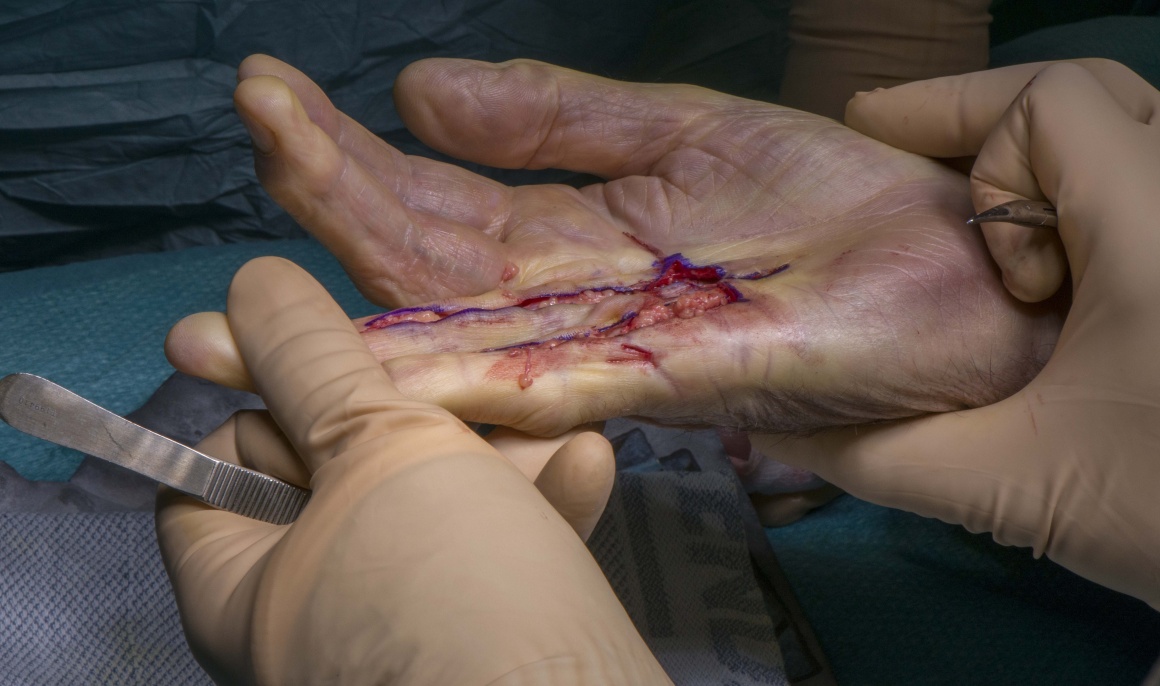Dupuytrens contracture: Limited fasciectomy plus Z-plasties
Overview

Subscribe to get full access to this operation and the extensive Upper Limb & Hand Surgery Atlas.
Learn the Dupuytrens contracture: Limited fasciectomy plus Z-plasties surgical technique with step by step instructions on OrthOracle. Our e-learning platform contains high resolution images and a certified CME of the Dupuytrens contracture: Limited fasciectomy plus Z-plasties surgical procedure.
Dupuytren’s disease is a fibroproliferative disorder affecting the hands. It has a variable clinical course and in most cases it causes contractures of the fingers requiring treatment. The highest incidence of this disease is in the Scandinavian countries, giving it the nickname ‘Viking disease’. It is common in Northern Europe and the incidence decreases towards the Eastern hemisphere. It is very rare in the African and Asian subcontinents. Japan interestingly has a high incidence of Dupuytren’s disease though it appears to be a milder form of disease.
There seem to be genetic and environmental factors involved in the aetiology of this disease. Alcoholic liver disease, anti-epileptic medication, smoking and Diabetes all seem to be risk factors for Dupuytren’s disease. It is commoner in men and the incidence is higher in the fourth and fifth decades of life.
The exact pathogenesis of Dupuytren’s disease is still not clear. There have been several theories about the origin of the disease. One of the theories is that it is a fibrosis of the intrinsic palmar fascia(McFarlane). The other theories are that it is an extrinsic disease which spreads along the palm and fingers(Hueston), or it is a combination of both(Gosset). The most widely accepted theory is that of Murrell which states that there is microangiopathy which releases free radicals which in turn start the fibrotic process.
In 1971, Gabbiani, an Italian scientist discovered a specialised cell called Myofibroblast in Dupuytren’s tissue. This cell is the key to the fibrotic process and has later been discovered in scar tissue.
Dupuytren’s disease can also affect feet, where it is called Ledderhosen’s disease and penis where it is termed Peyronie’s disease. Patients with disease in these ectopic sites have a more aggressive form of disease and it is termed a ‘Dupuytren’s diathesis’.
The decision to treat is made and the treatment method is chosen based on patient’s preference, functional disabilities and pattern of disease.
Author: Mr Rajive Jose FRCS
Institution: The Queen Elizabeth Hospital, Birmingham, UK.
Clinicians should seek clarification on whether any implant demonstrated is licensed for use in their own country.
In the USA contact: fda.gov
In the UK contact: gov.uk
In the EU contact: ema.europa.eu
Online learning is only available to subscribers.



















